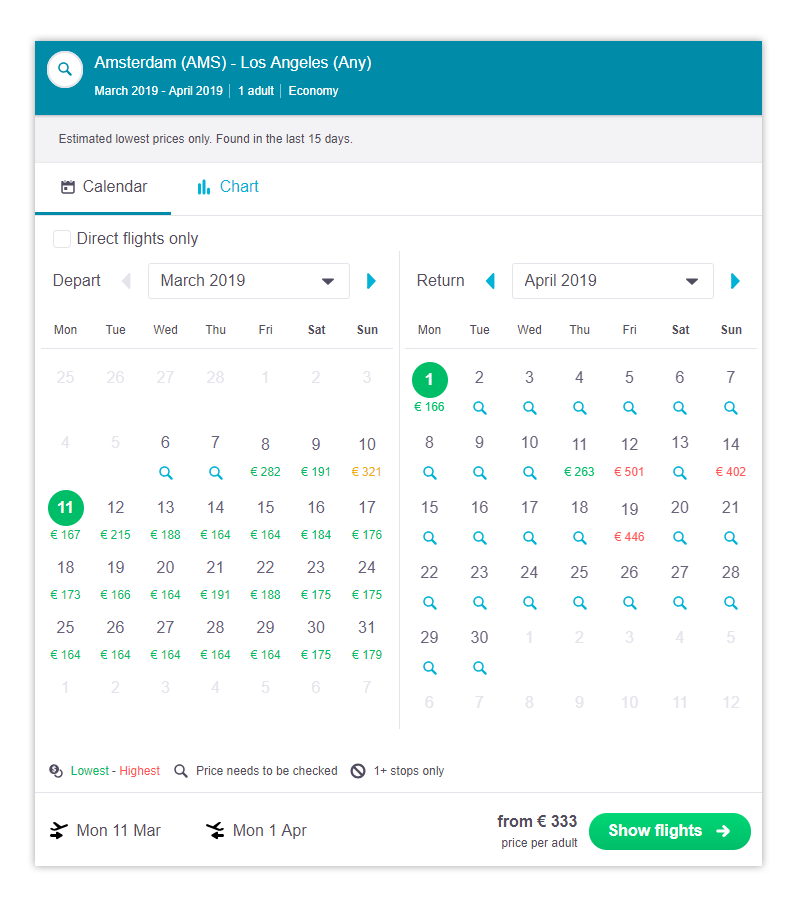The seasons have always been a powerful influencer of retail, but do they still matter with the rise of e-commerce?
In short: yes, the seasons still influence retail. Though the type of influence is changing drastically.
In this post, we’ll explore this “new” seasonality brought in the rise of e-commerce, and examine how you can adjust your strategies to match these changes.
Two types of seasonality in retail
Not all seasonality is the same, and it’s important to illuminate the different drivers of consumer spending.
Seeing seasonality as two separate categories (holiday-driven seasonal shopping and climate-driven seasonal shopping), will help you understand your sales data and optimize for the next year.
Seasonality and the holidays
“Holiday shopping” is something that retailers can safely count on, regardless of where they are in the world. As long as you’re tuned in to your market’s holiday calendar and understand the history and traditions of a place, you can somewhat accurately predict high-traffic times of year.
Some examples of holidays that drive traffic across Europe include Christmas, New Year’s Eve, and Valentine’s Day. You can plan on consumers shopping around these holidays, and can prepare your assortments accordingly.
You can also go down to the local level and look for holiday traffic there. Here in the Netherlands, the weeks leading up to King’s Day are a great time to sell anything orange. Regardless of what the weather forecast says, the vast majority of Dutch people will celebrate on April 27th in full orange regalia. While a rainy day might mean celebrations move inside, the weather has little-to-no influence on how consumers prepare and shop for the holiday.
Some categories are more influenced by the holidays than others. For example, you can almost guarantee that jewelry and chocolate sales will rise in early February for Valentine’s Day, regardless of the weather outside.
Depending on the holiday, themed products are a great way to drive extra sales. Retailers can safely bet that reindeer-themed products will sell in December, heart-shaped boxes will trend in early February, and pumpkin-themed items will be popular around Halloween.
Seasonality and weather
Even though retailers can count on a certain amount of holiday traffic, the type of products people buy at different points in the year can vary greatly depending on the climate.
Take, for example, the Christmas holidays. Here in Holland (and in most of Northern Europe), we associate Christmas with cold weather, warm fireplaces, gluhwein, cozy sweaters, and snow. The reason is obvious: the weather in this part of the world is typically cold around this time of year.
This isn’t true for much of the world. Consumers in the southern hemisphere are in the middle of the summer when Christmas rolls around, so shoppers can have completely different associations of the holiday. If you’re in Auckland or Sydney, you might spend your Christmas Day on the beach, not tucked away under blankets with a steaming mug of hot chocolate in your hand. A side effect of this climatic difference is that you’re far more likely to find a Christmas-themed swimsuit in Sydney than in Stockholm or Oslo. You also don’t have to travel all the way to Sydney to see a change of climate, and even within Europe seasonal temperatures and weather patterns vary.
Holiday-themed items aren’t the only products swayed by global weather differences. Certain categories are especially susceptible to weather changes, and are in fact even driven by the change of seasons.
The most obvious category affected by this “climate seasonality” is fashion. Traditionally, a store‘s physical capacity limited what products brick-and-mortar fashion retailers could carry. They sold swimsuits in the summer, then as the season tipped over into the colder weather for fall and winter, they’d swap out swimsuits for cozy socks, thick sweaters, and heavy coats.
But this seasonal cycle, much like retail itself, is changing in the 21st century.
Talk to one of our consultants about dynamic pricing.

How retail seasonality is changing
The seasons are still a major driving force in retail, especially for calendar holidays. And while they won’t disappear from your sales cycle calendars, the idea of a retail season is shifting for several reasons.
Rise of online shopping
Online shopping has changed retail in more ways than one. However, what’s notable for the discussion of seasonality is that retailers are no longer limited by the four walls of their physical store.
This has an impact on the notion of ‘seasonality’ – particularly when applied to weather. Because online is naturally more nimble than brick-and-mortar, it is far less reliant upon the traditional “seasons” to drive sales. The online model means that retailers can react almost instantly to changing market conditions and fluctuations in supply and demand - which can occur daily, if not hourly.
Today, no matter the season, retailers can sell any kind of product they wish. As long as they have a warehouse to hold and process products and orders, there are no limits on what they can sell. Now, a consumer can buy a swimsuit in the dead of January and get it shipped directly to their home in just a few days.
Changing consumer behavior
As retailers have become less concerned about limits on their products, so have consumers. Today’s shoppers won’t even bat an eye when it comes to ordering something “out of season” online. Instead, consumers expect to be able to find whatever they want, whenever they want.
This is especially important for retailers to know as out-of-season shopping rises. One of the drivers behind this change is the fact that travel has become significantly less expensive in the last 25 years. There’s been a 300% increase in the number of overseas trips taken since the mid 1990s, and you can now book last minute flights to warmer destinations for just a few hundred Euros.

Round-trip flights from Amsterdam to Los Angeles for as low as €333
This means consumers can now visit sunny or snowy places at any time of the year, and will order products out of season as they prepare for their vacations. Retailers should be stocked and prepared with any product a consumer might need, no matter the season.
Unseasonable weather
Consumer behavior and technology itself aren’t the only things changing seasonality: unseasonable weather can also seriously affect your retail sales.
This past summer, Europe was hit by the 2018 European heat wave. The whole continent experienced an uncharacteristically hot summer that began earlier and lasted longer than we could have expected.
A recent study found that unseasonably warm weather can cost retailers £40m per week for each degree that the temperature rises, and this was easy to see during the summer. Demand for summer clothes skyrocketed for much longer than retailers expected or were used to. In October, Superdry announced a 49% drop in their shares — part of which they blamed on the hot summer and their inability to sell jackets and coats.
Uncooperative weather only underpins the reason retailers need to stay agile in their pricing and marketing. If the temperature soars unexpectedly, the demand for warm-weather clothing, for example, will also rise. The reverse is also true, and if the temperature plummets, consumers will search for more cold-weather clothes and indoor activities like board or video games.
How retailers can adjust to the new seasonality
There’s no point in trying to fight these changes: the world will only continue to morph and shift in the coming years.
That’s why a pricing strategy is so important; it can help you navigate the rocky seas of changing society and new innovations. Pricing strategies are paramount to today’s success. Without one, you’ll get lost in the sea of e-commerce and can quickly veer off-course.
But how are retailers supposed to execute any strategy across assortments with hundreds of thousands, if not millions, of products? Pre-internet, the average retailer had to consider around 4,000 pricing decisions per quarter to stay ahead of competitors. This number has now risen to more 60,000,000 daily decisions that you need to make in order to stay competitive.
Dynamic pricing makes staying on top of your pricing strategy a possibility, and helps you stay agile in the face of a new seasonality.
Omnia’s Dynamic Pricing software helps you manage your pricing strategy across an entire assortment. But what really makes our software different is our advanced tooling, including our weather API. With Omnia, you can combine your strategy with each product’s unique price elasticity...then factor in how its sales respond to changes in the weather.
Interested in learning more? Try Omnia free for two weeks and see how Dynamic Pricing helps you take control of your assortment and stay agile in your pricing strategies.





